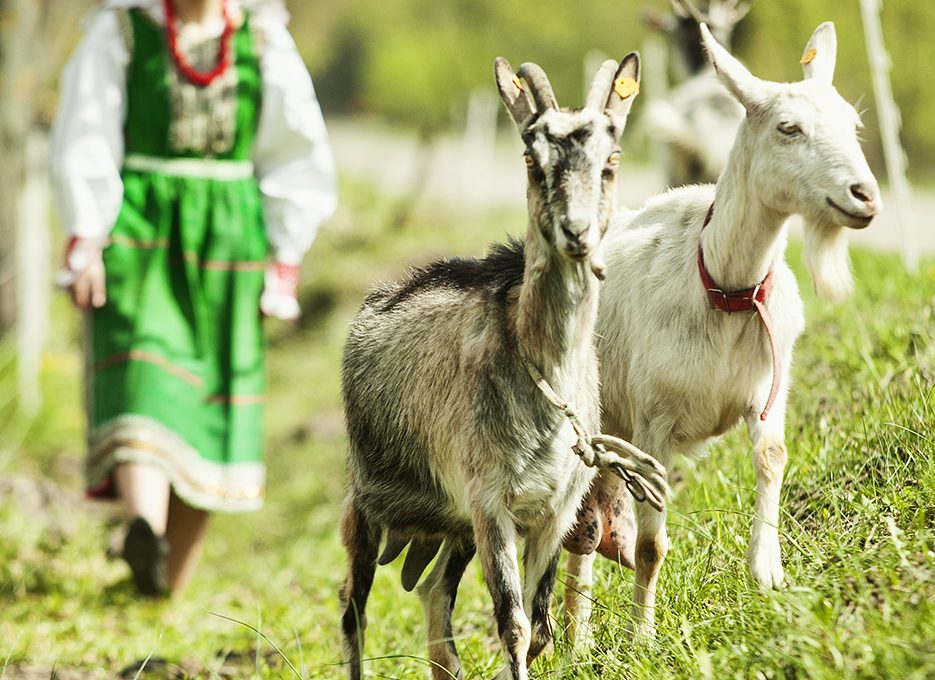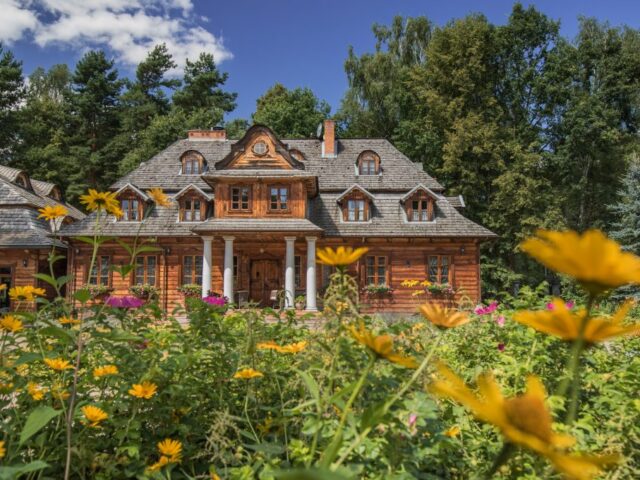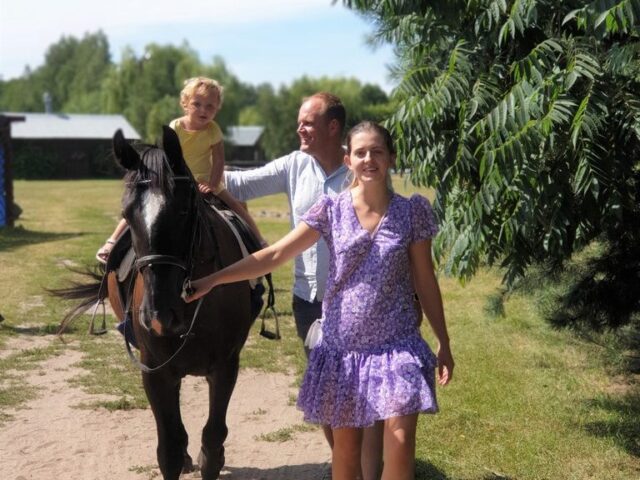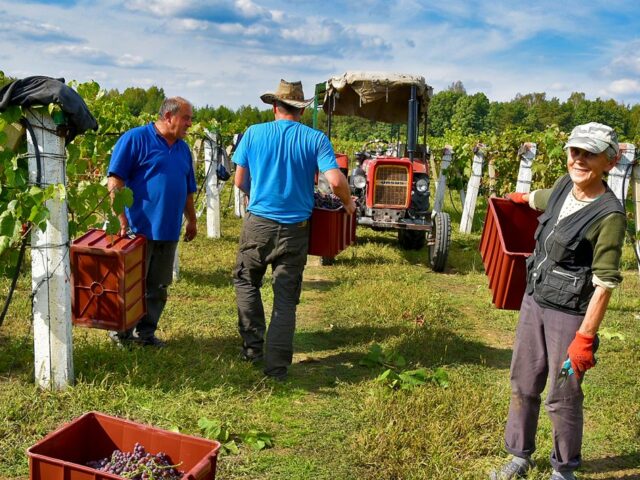SLOW LIFE IDEA
Monika and Wojtek claim that most of what is happening in their lives and what is related to agritourism activities was a coincidence. The owners of the habitat have been living in Wielgolas for 9 years. Initially, it was an escape from the city and the choice of a small house instead of a studio apartment in the block of flats. They wanted their then six- month old daughter Hanka to spend her childhood as close to nature as possible. After 4 years, they bought more land, the first two goats and chickens, and they started trying their chances in cheese production. At the same time, they were renovating a 100 -year-old original and badly damaged Kurpie cottage. The first guests stayed there, and the hosts began to share the beauty of the surrounding nature. They had no experience and had to learn all the skills related to life in the countryside and animal handling. They drew knowledge from each new situation, and despite several failures, they enjoyed working there and success in small steps. They have found their place on earth and are delighted with the fact that most visitors fall in love with this place and enjoy participating in the family life.
IDYLLIC STORY
The Leluja Siedlisko is a really idyllic and atmospheric place, appreciated not only in touristic competitions, but above all by tourists. The hosts are very pleased with the fact that they maintain private contacts with many guests, become part of the family, and often the Leluja Habitat is visited by children on their own, without parents. Many people also support the activities of Monika and Wojtek. Many also help by engaging in farm work. The Leluja is not only an agritourism farm, but also a part of their life. The philosophy of the hosts is that the guests, in addition to the accommodation and meals, also get involved in the family good and better days, animal breeding and all in one package. They do not hide the fact that there are mice in the yard, that flies and other insects fly and a spider may come out from behind the cupboard. It is known that when it rains, there is no chance for clean shoes, because mud forms around the yard. But his place is real and unique with its authenticity! It is a real village that presents inhabitants with many challenges and creates unexpected situations. Life outside the urban center builds the belief that you can live differently, detached from civilization, in a peace that cannot be experienced in a city. The Leluja Habitat and its hosts are the best proof that such life is pleasant, and also give a much needed “reset” for a tired head.
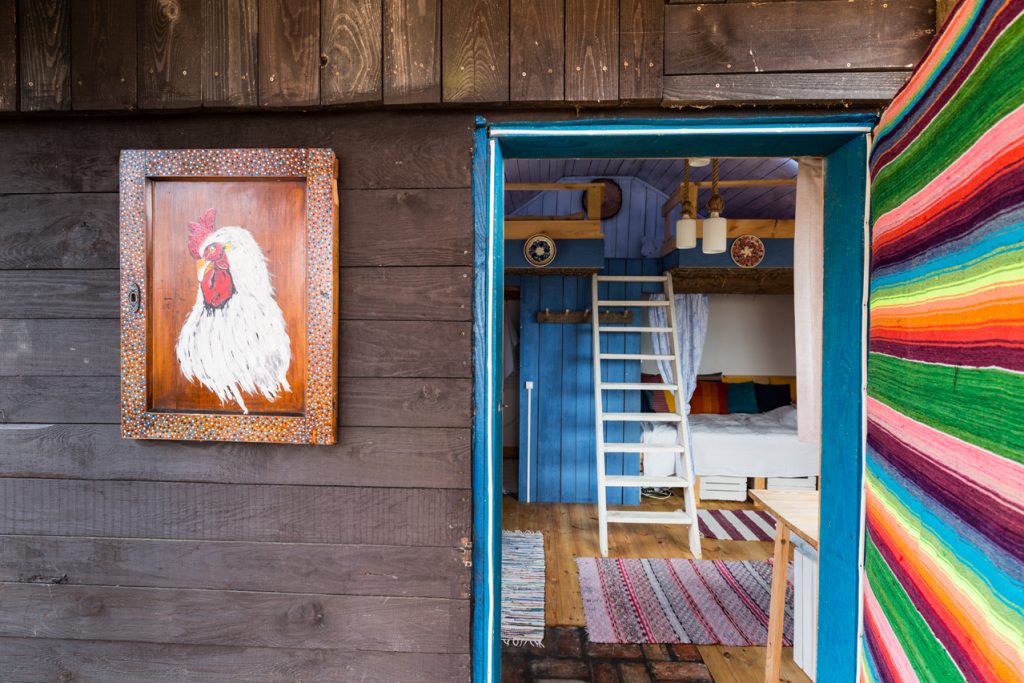
FAVORITE PLACES
The habitat is located in the Biała Forest, so there are fields, meadows and forests around. This is definitely the main advantage of this place. You can spend whole days in the forest picking berries or mushrooms and penetrating the marshes in search of traces of the existence of beavers. The forest is also rich in game such as elk and deer. You can also meet a hoopoe, a black stork and a white-tailed eagle. A walk to the Wielgolas Reserve is recommended, where you can see ancient pines and rich vegetation. As for the monuments, it is worth visiting the church in Sokołów, going to Pułtusk to walk along the longest paved market square in Europe and having coffee at the Pułtusk castle. For those enjoying active leisure, a canoe trip on the canals of Pułtusk, known as “the Masovian Venice ” or longer route on the Narew, will be ideal. For lovers of sacred places, the church in Sadykrz, where the cult of St. Roch and the relics of a medieval pilgrim are kept. There are also small chapels in the surrounding forests. The immediate vicinity is an ideal place for people looking for peace and relaxation, who like nature.
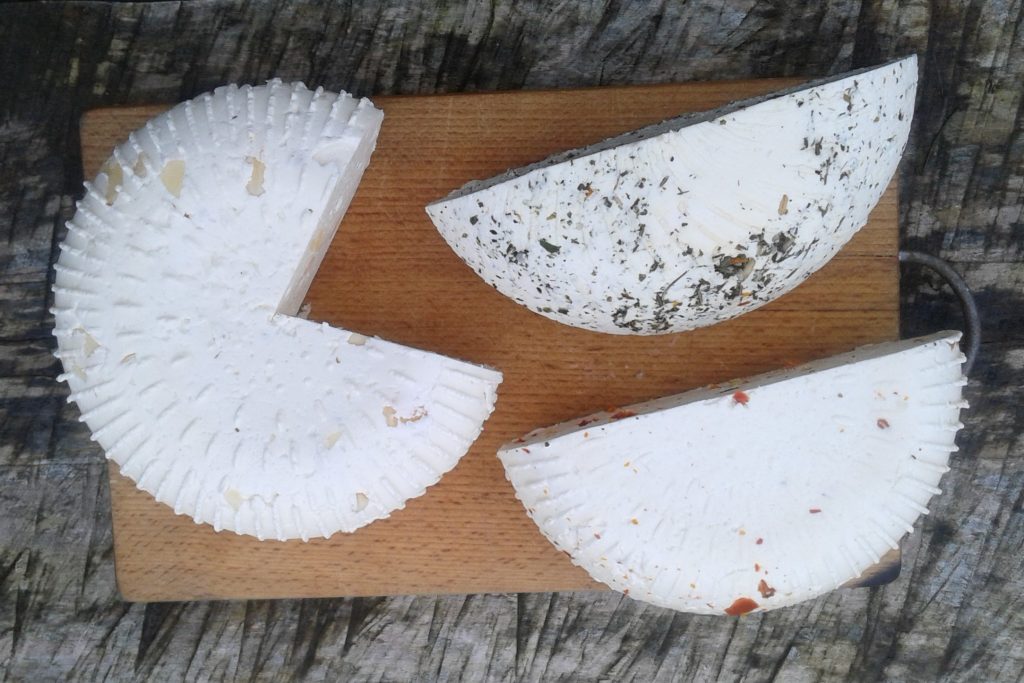
YOU DID NOT KNOW
The Leluja habitat is located in the Kurpie Białe.
Monika and Wojtek have long been looking for a name referring to Kurpie, a little – known land in Poland. It turned out that “Leluja” means the Kurpie cutout. Although the name belongs to Kurpie Zielone, a region closer to Ostrołęka, it did not discourage the hosts. This is how the name Leluja Siedlisko was created and the logotype.
In the Kurpie Biała Forest, rushes were used to be collected in the fall and stored in appropriate conditions. For decoration, a plastic rush core was used, arranged in elaborate patterns: circles, spirals, waves. It was glued on the shells with rye flour and water glue. Red, green and yellow threads were also added between the rushes.
Part of the Wielgolas reserve, located nearby, is called the tar factory. The etymology of the name refers to the extraction of tar from confers in the old days; while in the reserve on old pines, traces of the collection of resin have been preserved to this day.
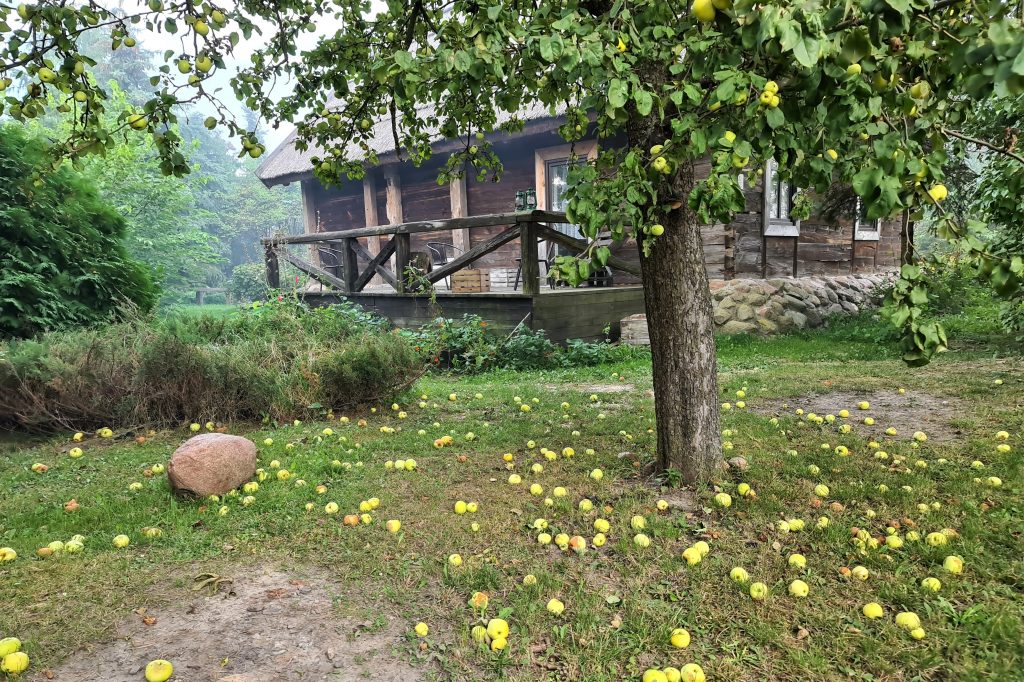
WHAT WHERE WHEN
Every season the Leluja Habitat offers special activities according to the time of the year.
Spring is the time when nature awakes and is the perfect time for organizing cheese workshops. The hosts willingly share their knowledge and skills with guests. This is the time of goat and sheep birth and the start of goat cheese production after the winter shutdown. It is also a good time to collect the first herbs, for example coltsfoot, perfect for winter colds. Summer is the most intense time in the habitat and is the time for individual guests, an organization of summer camps called “Wild Children” with many activities. Long hikes, exploring the area, learning about birds and plants, walking in swamps, rope crossing and….sleeping outside can be organized.
Autumn is the period of picking mushrooms and “dinners under clouds” for one-day guests who want to spend only a few hours in the habitat.
In winter the sauna is lighted and winter bonfires are lit in a tipi tent, sleigh rides are organized, and walruses!!! can bath in the icy pond.
It is also worth going to the events taking place in nearby Pułtusk,with most interesting: the Picnic with Husaria, commemorating Masovia commitment to the Vienna Relief and the winner from Vienna – King Jan III Sobieski, Days of the Patron of the City of Pułtusk – St. Mateusz or the Festival of Krzysztof Klenczon, who was born in the town and was a honorary citizen.

IN THE OFFER
Accommodation: in Chata Kurpiowska called Lelujowa Chata, small house called Kurnik or in a barn. You can spend an extraordinary night at a tipi tent and Lelujowa Ambon, located in the forest.
Each of these places is different. The year – round Lelujowa Chata is a 100 -year-old Kurpie cottage with preserved structural elements and interior furnishing referring to them.
Kurnik (named after its former function – hen house) is a small year – round house for one family, with a viewing terrace, heated by a fireplace. In the barn, you can sleep either on hay or on the mezzanine. It houses a summer kitchen, dining room and a holiday cinema. It is a place for workshops, parties and spending time together. The Lelujowa Ambona is located in the Forest Camp Base. It is a house with a fireplace for lovers of comfortable camping, but without electricity and water. Using a wooden toilet reminds many people of holidays in the countryside at their grandmother’s. But the view from the cottage is priceless. It is an ideal place for natural hunting with a camera and binoculars, because it is located next to the forest, about 500 meters from the center of the habitat. Here you can experience 100 percent of nature. There are 3 tipis in the habitat: one large, 9 meters in diameter, with a hearth in the middle, and two small ones – 6 meters. In the big one, you can spend pleasant evenings even in winter. Next, there is a bathtub with a fireplace, where you can enjoy a hot bath, and a kitchen shelter for convenient preparation of meals. It is also an ideal place for nature lovers.
The hosts serve full board, using as many of their own products as possible, such as cheese, sourdough bread, homemade preserves, homemade cold cuts, and juices.The classic and simplicity of home cooking rule here.
Cheese workshops are also organized in the habitat. As part of the foundation activities, school and kindergarten groups are accepted for lessons in the countryside. During the holiday season the offer includes summer camps for children. Additional attractions include: sauna, swimming pool, fishing, cycling, walking, cross – country skiing, winter swimming and goat milking.
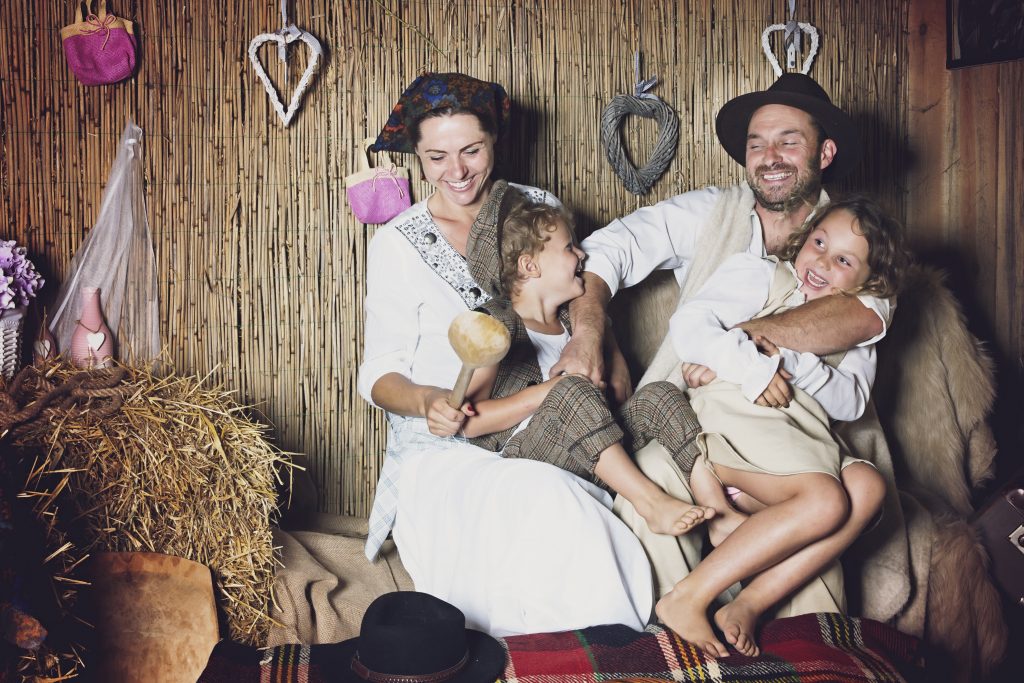
HOSTS
Monika, Wojtek, Hanka and Kuba are a family creating Siedlisko Leluja. Monika is responsible for cooking and cheese production, and still has new projects referring to rural life. She hates boredom and doing nothing. She loves sleeping outdoors, simple ideas, freedom and has a natural approach to life. She likes kitchen experiments, knows herbs and processes all possible natural products. She is good in contact with children, shows them nature and can convince them that the power of nature can work miracles.
Wojtek is the host, handyman. He is perfectly at ease in the production of cheese and in all economic activities. He is very calm and can implement all of Monika’s ideas in a calm manner. In his free time, he is passionate about cross cycling. He is responsible for the implementation of projects related to obtaining funds. It also comes to the front in the case of the so-called “difficult client”.
Hanka and Kuba, the hosts’ children, are very independent, they easily establish contacts with guests and are happy to show around the habitat.
Hanka is sensitive to the beauty of nature. Kuba is a busy 6 -year-old and is fit. The parents, observing their children, are glad that this is the way of life they have chosen for their family.
